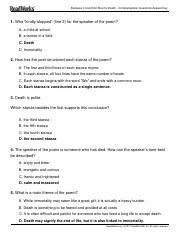Finding “River Flows in You” Piano Sheet Music PDFs
Numerous online sources offer “River Flows in You” sheet music in PDF format. Free downloads exist, but be cautious of copyright. Legitimate sites sell authorized versions; explore options for various skill levels. Always respect copyright laws when downloading or sharing.
Sources for Free Downloads
Finding free “River Flows in You” sheet music PDFs requires careful consideration. Many websites offer free downloads, but the legality and quality can vary significantly. Some sites may provide simplified arrangements, while others might offer transcriptions of varying accuracy. Always check the source’s reputation and ensure the music is presented as a free, non-commercial offering. Be aware that free downloads might lack the meticulous editing and proofreading of commercially published scores. Exercise caution, as using unauthorized copies infringes on copyright. Consider if the potential risks outweigh the benefit of free access.
Legitimate Websites Offering Paid Sheet Music
Several reputable online platforms offer legally licensed “River Flows in You” sheet music PDFs for purchase. These websites often provide high-quality, professionally edited scores, ensuring accuracy and a pleasant playing experience. Purchasing from these sources directly supports the composer and publisher, contributing to the creation and distribution of future musical works. The price varies depending on the arrangement’s complexity and the vendor’s pricing structure. Expect to pay a small fee for a digital download. Look for sites specializing in classical piano music, or larger music retailers with extensive sheet music catalogs. Always verify the seller’s legitimacy before making a purchase to avoid scams or unauthorized copies.
Variations and Arrangements
Exploring Different Skill Levels
Sheet music for “River Flows in You” caters to various skill levels. Beginner versions simplify the melody and chords, while intermediate and advanced arrangements add complexity and technical challenges.
Beginner-Friendly Versions
Many websites offer simplified arrangements of “River Flows in You” specifically designed for novice pianists. These versions often reduce the complexity of the original composition, focusing on the essential melody and using simpler chord progressions. Look for descriptions like “easy piano,” “beginner level,” or “simplified version” when searching. These arrangements will typically use a smaller range of notes and fewer complex rhythms, making them more accessible to those just starting their piano journey. The goal is to allow beginners to experience the beauty of Yiruma’s piece without being overwhelmed by technically demanding passages. Such versions often omit intricate ornamentation or elaborate harmonies found in the original score. Remember to check the sheet music’s description for an accurate assessment of its difficulty level before downloading.
Intermediate and Advanced Arrangements
For pianists with more experience, numerous arrangements of “River Flows in You” cater to intermediate and advanced skill levels. These versions retain the emotional depth of the original composition while incorporating challenging technical elements. Expect to encounter more complex chord voicings, intricate arpeggios, and extended passages requiring greater dexterity and musicality. Some arrangements might include added embellishments or variations not present in simpler versions; These more advanced pieces often incorporate sophisticated rhythmic patterns and dynamic contrasts, demanding a greater understanding of musical phrasing and expression. Searching for terms like “intermediate piano,” “advanced piano,” or “concert arrangement” will help you locate sheet music appropriate for your skill level. Consider the level of technical proficiency required before selecting an arrangement; challenging yourself is beneficial, but selecting a piece appropriately suited to your abilities is crucial for a rewarding musical experience.
Understanding Copyright and Legality
Free sheet music downloads may infringe copyright. Legally obtained scores, whether free or paid, respect the composer’s rights. Always check licensing before downloading or distributing any music.
Free vs. Paid Sheet Music
The availability of “River Flows in You” sheet music ranges from free downloads on various websites to paid versions offered by legitimate music publishers. Free options often lack official authorization, potentially violating copyright laws. Using such unauthorized scores could lead to legal issues for both distributors and users. Paid sheet music, purchased from reputable sources like musicnotes.com or directly from publishers, ensures legal use and often includes high-quality transcriptions and potentially additional features. The price reflects the legal licensing and often professional arrangement quality, offering a superior playing experience. Choosing between free and paid options involves weighing convenience against legal compliance and the overall quality of the sheet music. Consider the implications before downloading.
Respecting Copyright Laws
Copyright protection safeguards musical compositions, including Yiruma’s “River Flows in You.” Downloading or distributing unauthorized sheet music is illegal and unethical. Respecting copyright means obtaining sheet music legally, either through purchase from authorized sellers or by utilizing resources that explicitly grant free use under a Creative Commons license or similar agreement. Sharing copyrighted material without permission infringes on the composer’s and publisher’s rights, potentially leading to legal action. Remember, even seemingly insignificant actions, like sharing a PDF with a friend, can constitute copyright infringement. Prioritize ethical and legal acquisition of sheet music to support creators and avoid potential consequences.
Additional Resources and Information
Explore online sheet music libraries, forums, and Yiruma’s official website (if available) for further resources and community discussions about “River Flows in You” sheet music.
Websites with Sheet Music Libraries
Many websites host extensive sheet music libraries, offering various arrangements of “River Flows in You” by Yiruma. Some sites specialize in classical music, providing high-quality scans or professionally transcribed pieces. Others cater to a broader range of genres, including beginner-friendly versions alongside more challenging arrangements for intermediate and advanced pianists. Remember to check licensing and copyright information before downloading any sheet music to ensure legal usage. Reputable sites often clearly state whether the music is free or requires purchase. When searching, specifying “Yiruma River Flows in You piano sheet music PDF” will yield the most relevant results. Websites may also offer interactive sheet music, allowing for playback and adjustments to tempo and other settings.
Yiruma’s Official Website (if available)
While the provided text doesn’t directly reference an official Yiruma website offering sheet music downloads, checking for one is crucial. An official site would be the most reliable source for authorized sheet music for “River Flows in You.” Such a site might offer digitally downloadable PDFs, potentially with different arrangements catering to varying skill levels, from beginner to advanced. It’s also likely that any official releases would specify licensing terms and copyright information clearly. The site might also include information about authorized retailers selling physical copies of the sheet music or links to trusted third-party vendors. Checking for news and updates on the site could reveal potential future releases or announcements about sheet music availability. Always prioritize official sources to ensure authenticity and legality.
Community Forums and Discussions
Online piano communities and forums can be invaluable resources when searching for “River Flows in You” sheet music. These platforms often feature discussions among pianists sharing experiences, recommendations, and links to reliable sheet music sources. Members might discuss different arrangements, pointing out websites offering high-quality PDFs or sharing their own transcriptions (if legal). Engaging with these communities can provide insights into readily available resources and potential pitfalls to avoid. However, always exercise caution when downloading from unofficial sources; verify the legality of any shared files. Active participation in these forums might even reveal fellow pianists offering personalized assistance or advice regarding suitable sheet music versions based on your skill level. Remember to always respect copyright laws and contribute positively to the community.





